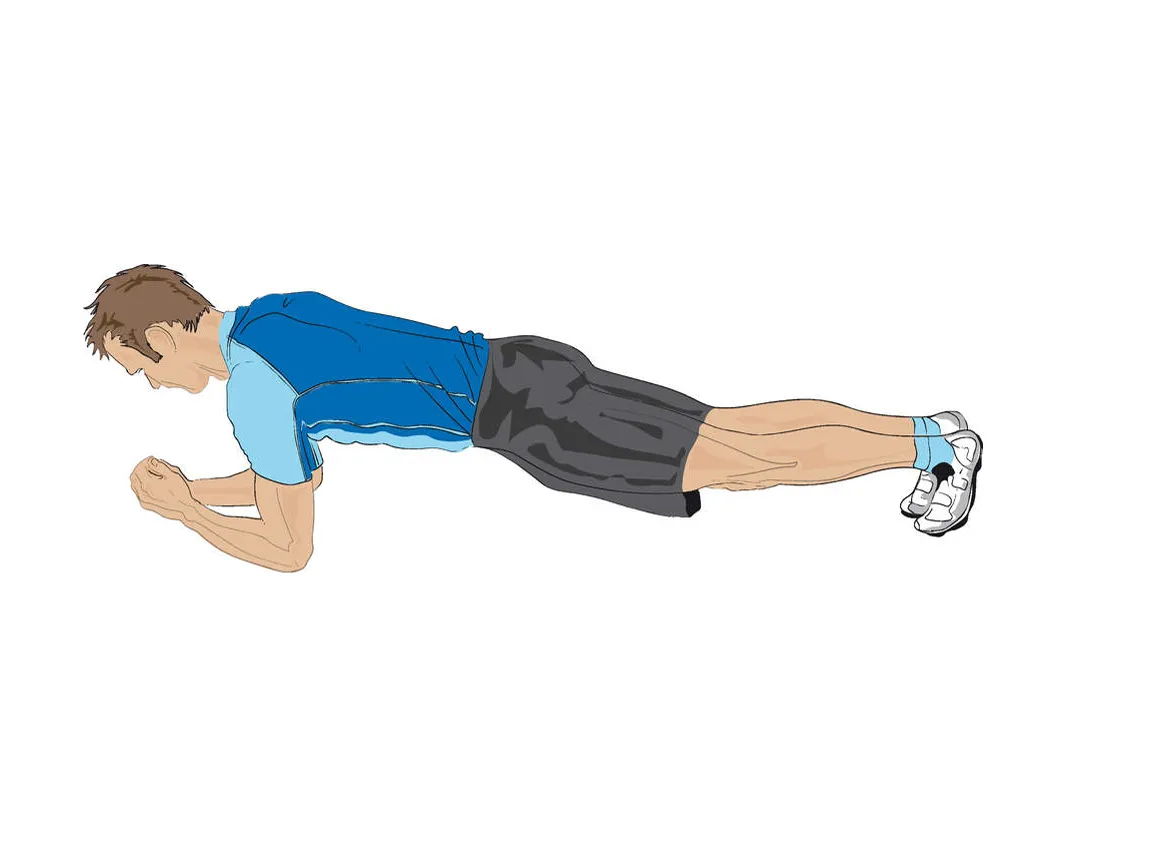Exercises that activate your upper body are ideal for cyclists looking for balance through cross-training. Here we explain how you can build core strength using a method known as The Plank.
Cycling is an aerobic exercise that helps you build strength and co-ordination and, in most cases, is relatively low impact. Compared with other aerobic sports, cycling is reasonably safe and less likely to lead to injury unless you’re an aggressive rider or do dirt jumps or downhilling.
However, regular riders (both on and off-road) can suffer from neck and back problems related to the ‘stretched out’ riding position encouraged by modern bike geometry. Also, most of the power to propel the bike comes from the lower body, with the quadricep, gluteus maximus, hamstring and calf muscles involved in repetitive movements while the rest of the body is kept relatively still. This can lead to over-development and overuse of certain muscles while others are ignored.
Many cyclists counter this with cross-training, choosing exercises that focus on full or upper body conditioning such as rowing, swimming and skiing. These sports use the muscles in your back and arms and help to build core strength by working the deep, abdominal muscles that wrap around the back and stomach like a girdle. If these muscles are strong they support your spine and keep you stable and balanced, and you’re less likely to injure yourself through repetitive movement.
Core training works the deep muscles in your back, abdomen and pelvic floor. Working these muscles is not about getting a ‘six-pack’ – the rectus abdominus muscles involved there are close to the surface and have little to do with core strength. Instead you want to engage the transversus abdominus, multifidis, diaphragm and pelvic floor muscles, and a simple and effective exercise that activates these as well as building strength in the arms, upper back and shoulders is The Plank.
The Plank

1. Work on a firm but supportive surface, such as an exercise mat. From a kneeling position, place your hands on the floor in front of you with your arms and fingers straight, and your elbows ‘soft’.
2. Engage your core muscles. This can be quite tricky: a method used in Pilates called ‘zip and hollow’ involves keeping your stomach muscles contracted while breathing in (allowing your rib cage to expand sideways with the breath, rather than the stomach) and then contracting your belly button further towards your spine while breathing out. This ensures that the abdominal muscles are active throughout the cycle of the breath.
3. When you’ve ‘activated’ your core, walk your hands forward, allowing your legs to stretch out behind you. Don’t hold your breath. Lean forwards and allow your hands to take your weight, aligning your elbows directly below your shoulders. Lift your belly up away from the floor as you extend your spine, using your lower abdominal muscles rather than those in your lower back, to avoid strain.
4. With your abdominals lifted, extend your legs straight behind you and curl your toes under so some of your weight is on the balls of your feet. Straighten your legs and concentrate on keeping your body straight and your muscles activated without overtightening. Your body should be in a straight line from your feet to your head (see illustration above).
5. Using the breathing technique described above, hold the position for three to five breaths. This can berepeated up to five times. Be careful not to strain your neck, ensure that your elbows are below your shoulders throughout, and don’t forget to breathe!
More on the Pilates breathing technique can be found at www.thinkpilates.com – to get the most from The Plank, it’s well worth taking the time to learn the method properly.
